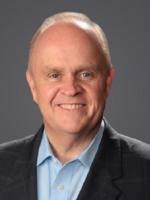On May 13, 2021, the U.S. Centers for Disease Control and Prevention (CDC) amended its COVID-19–related guidelines to provide that vaccinated individuals no longer need to wear masks in public, whether indoors or outdoors. Many employers, therefore, decided to amend their COVID-19 policies to allow vaccinated workers to go without masks in the workplace.
Then the Delta variant of the virus began to spread across the country in June and July. The COVID-19 variant is said to be more contagious than the common cold, akin to the chickenpox. And vaccinated individuals who develop “breakthrough cases,” the CDC has reported, can carry and communicate the variant to others, particularly unvaccinated individuals, even where the vaccinated individuals do not come down with the virus themselves.
Breakthrough cases are suspected to be extremely small in number, but the data, which rely on passive and voluntary reporting, cannot be said to be particularly reliable. As of July 26, 2021, the CDC had received reports of 6,587 breakthrough cases, from among the nation’s 163 million vaccinated individuals (or less than .0001 percent), that had led to hospitalization or death. However, more individuals likely qualify as breakthrough cases, and can transmit the virus but are asymptomatic and therefore have gone unreported.
On July 27, 2021, therefore, the CDC revised its COVID-19 guidelines yet again to recommend, among other things, that vaccinated individuals go back to wearing masks when in “public indoor settings” in areas of the country with substantial or high rates of transmission of the virus. And that has confounded employers that already have been frustrated by the CDC’s often-changing and just as often ambiguous recommendations.
What, exactly, are “public indoor settings”? And which workplaces qualify? The answers to those questions will have a significant impact on what nonhealthcare employers decide they should (or should not) do and will (or will not) do when it comes to amending their masking policies in response to the guideline change. (Healthcare employers are subject to the Occupational Safety and Health Administration’s (OSHA’s) COVID-19 Emergency Temporary Standard (ETS) and its existing masking requirements.)
Unfortunately, the CDC has not defined the term, “public indoor settings,” and, according to a source within the agency, is unlikely to do so. Thus far, furthermore, OSHA has not amended its June 10, 2021, COVID-19 guidance to weigh in on whether it believes the new CDC recommendation applies to particular or to all indoor nonhealthcare workplaces. That leaves nonhealthcare employers to wonder on their own what the term means and whether it applies to their establishments.
Many commentators have been quick to conclude that the new recommendation applies to all indoor workplaces not already covered by the ETS. But that conclusion, absent further word from the CDC or OSHA, is premature. The term, “public indoor settings,” cannot be presumed to be the equivalent of the term, “indoor settings”; the word, “public,” as a modifier of “indoor settings,” has to mean something. So what does the term mean, then, when it comes to workplaces and employers’ OSHA compliance?
Key Takeaways
The critical takeaways are that we do not know the answer to that question yet and that we are not going to know until OSHA weighs in. Some commentators believe that every indoor setting outside of a person’s home or other private arena, and therefore every indoor workplace, qualifies as public seemingly because people from outside the same family or any particular person’s “private world” come together there. Others believe, essentially for the same reason, that every common area in an indoor workplace qualifies as public, though the rest of the workplace might not.
A source within the CDC, however, has noted that, over the course of the pandemic, the CDC’s use of “public” with respect to places usually has meant “a place where any member of the general population can enter, e.g., a place of business that caters to customers.” If the CDC’s use of “public” in the revised masking guideline is consistent with that earlier use of the term, then the universe of indoor workplaces that are subject to the CDC vaccinated individuals masking recommendation may be considerably smaller than many commentators have suggested. Even if “public indoor settings” means something more than just places that serve customers, the universe of workplaces to which the term applies still may be considerably smaller than many have suggested.
OSHA, however, is not bound by the CDC’s intentions or history of language use and may, therefore, come down on the side of more is better. We will have to wait to see.
Thus, we do not know yet what “public indoor settings” means for OSHA compliance purposes. In the meantime, it therefore is premature for non-healthcare employers to jump to the conclusion that all their indoor workplaces are, in fact, subject to the new CDC masking guideline for vaccinated individuals. They should consider carefully if they wish to take that position and then, if so, take it deliberately. Or they should decide deliberately to be more particular, to consider the circumstances of each of their workplaces and determine if it is “a place where any member of the general population can enter” and then to treat it accordingly for purposes of the CDC’s recommendation.




 />i
/>i


